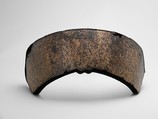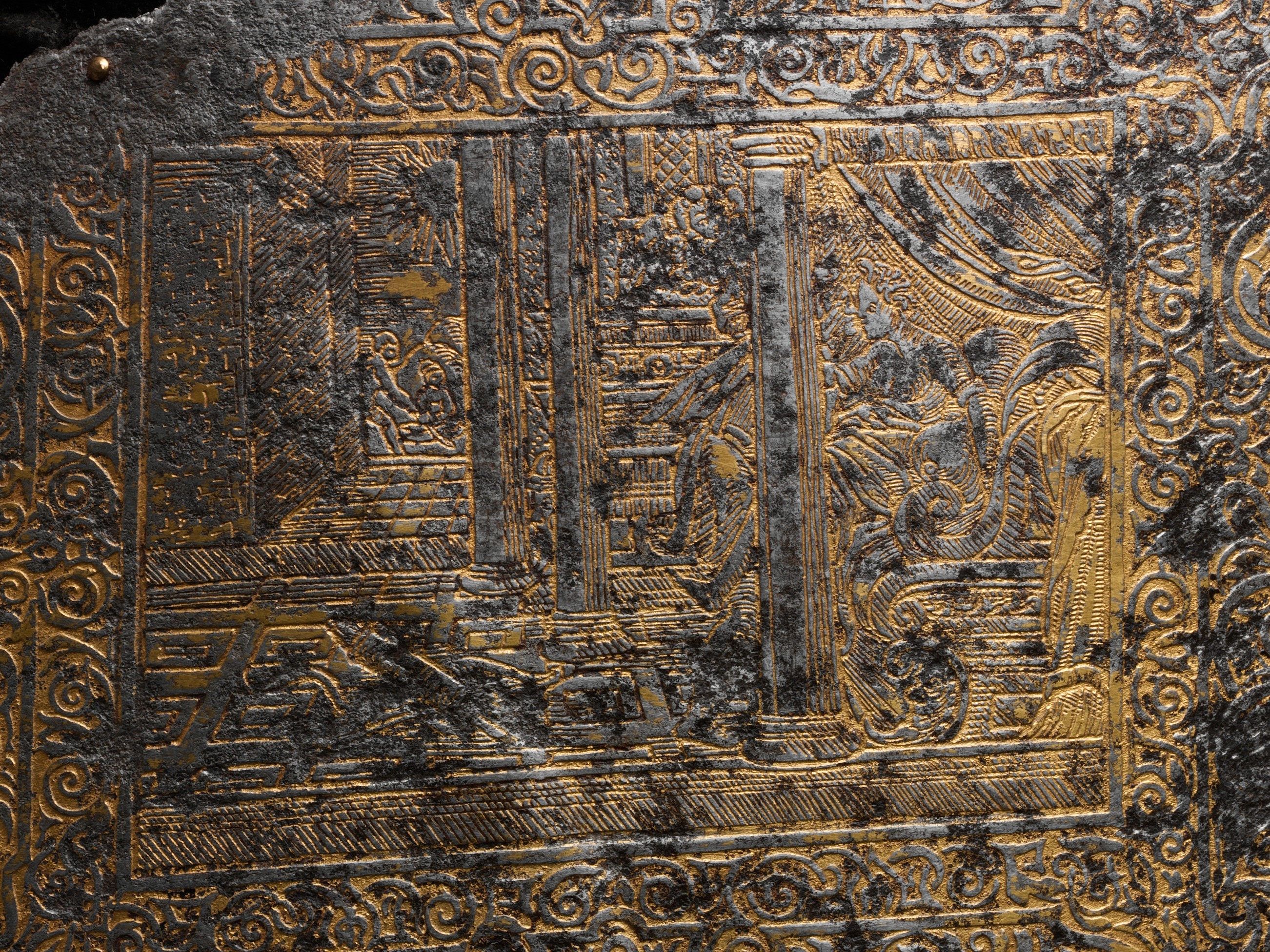Cantle Plate
Not on view
Despite its damaged condition, the rich decoration of this cantle plate indicates that it once belonged to a very important armored saddle. The design, gilt overall, is dominated by three symmetrically placed figural scenes in rectangular panels, each flanked by a profile bust in an oval cartouche. The cartouches and the panels are embedded in a dense ground of open strapwork and intricate tracery motifs in a style evocative of the finest goldsmiths' work produced in Nuremberg and Augsburg during the third quarter of the sixteenth century.
Figural ornament employed in armor decoration was almost always copied from, or at least inspired by, published prints, many of which were specifically created to serve as models for goldsmiths, cabinetmakers, and decorators in various media. The decoration here is no exception: both the narrative scenes and the busts are based on the works of Virgil Solis (1514–1562) of Nuremberg one of the most prolific German printmakers of the sixteenth century. The three narrative scenes, rendered with remarkable clarity and precision, are copied from Solis's woodcut illustrations to the edition of Ovid's Metamorphoses, published in Frankfurt am Main in 1563. The scenes can be identified as follows (from left to right): Apollo and Leucothae (Metamorphoses 4.190–255), Minos rejects Scylla's gift of Nisus's purple lock (8.81–103), and Halcyones' dream of Ceyx's death (11.633–748). Three of the four busts derive from a frieze of six busts engraved by Solis in the 1550s.
Despite the surface corrosion, this cantle plate is one of the most ambitious and masterly examples of armor etching of the period. Since no other armor matching its distinctive design is recorded, it is not known if the saddle to which it belonged was made as a single work––perhaps even as an etcher's "masterpiece" offered for entry into the guild––or was part of a horse armor or even a complete garniture for man and horse.
Strapwork, tracery, and arabesques were fashionable motifs in the decorative arts of the period and often appeared on armor, although usually confined to borders or well-defined bands of ornament. Employing them to cover the entire surface of an armor is rare; notable examples include two garnitures for man and horse by the Nuremberg armorer Kunz Lochner (1510–1567), one made about 1555 for King Sigismund II Augustus of Poland (Livrustkammaren, Stockholm, 2603), the other of about the same date made for the king's brother-in-law, Prince Nikolaus Radziwill (see acc. no. 14.25.854). In addition, there is a helmet made in Augsburg in 1555, possibly for Emperor Maximilian II, which, like this cantle plate, is gilt overall (Wallace Collection, London, A188). Among these examples, however, the present piece is the only one to include figural scenes.
Due to rights restrictions, this image cannot be enlarged, viewed at full screen, or downloaded.
This artwork is meant to be viewed from right to left. Scroll left to view more.



